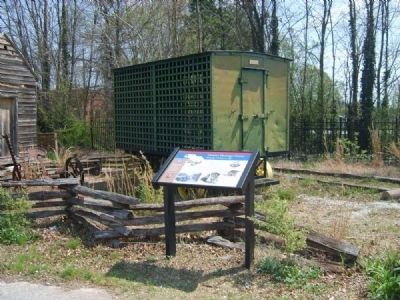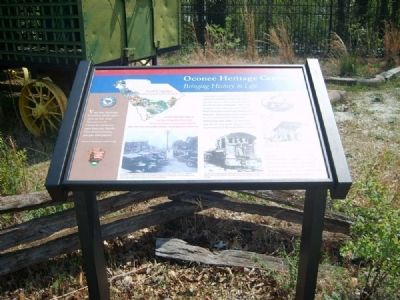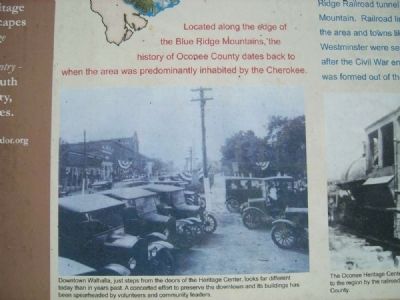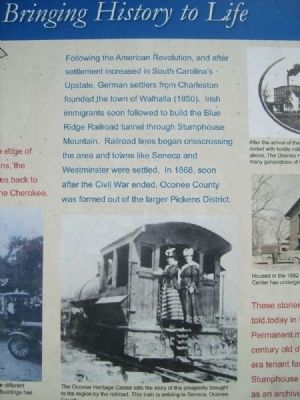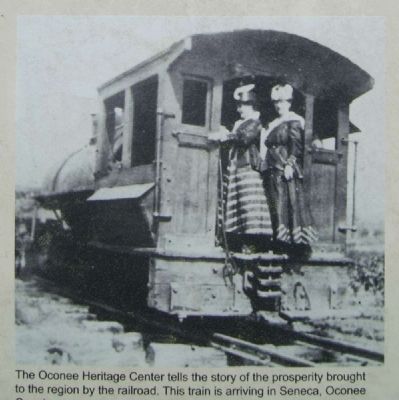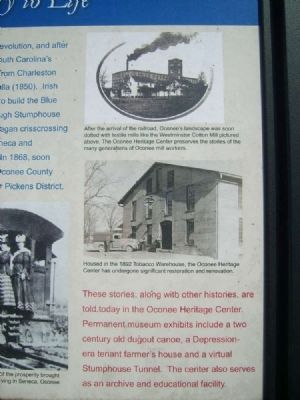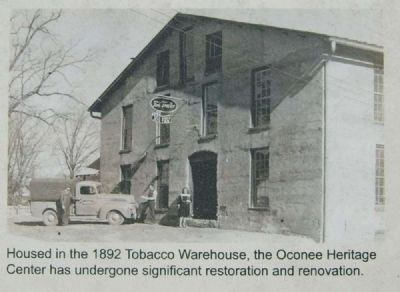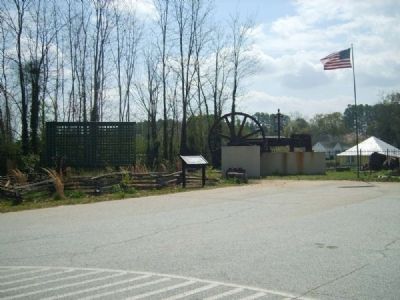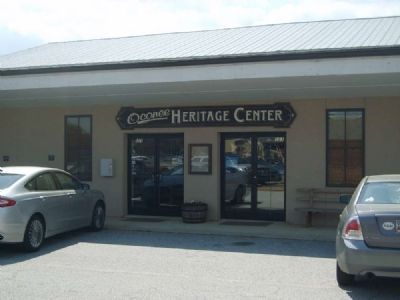Walhalla in Oconee County, South Carolina — The American South (South Atlantic)
Oconee Heritage Center
Bringing History to Life
Located along the edge of the Blue Ridge Mountains, the history of Oconee County dates back to when the area was predominately inhabited by the Cherokee.
Following the American Revolution, and after settlement increased in South Carolina's Upstate, German settlers from Charleston founded the town of Walhalla (1850). Irish immigrants soon followed to build the Blue Ridge Railroad tunnel through Stumphouse Mountain. Railroad lines began crisscrossing the area and towns like Seneca and Westminster were settled. In 1868, soon after the Civil War ended, Oconee County was formed out of the larger Pickens District.
These stories, along with other histories, are told today in the Oconee Heritage Center. Permanent museum exhibits include a two century old dugout canoe, a Depression-era tenant farmer's house and a virtual Stumphouse Tunnel. The center also serves as an archive and educational facility.
Erected by South Carolina National Heritage Corridor.
Topics and series. This historical marker is listed in these topic lists: Railroads & Streetcars • Settlements & Settlers. In addition, it is included in the South Carolina Heritage Corridor series list. A significant historical year for this entry is 1868.
Location. 34° 45.85′ N, 83° 4.015′ W. Marker is in Walhalla, South Carolina, in Oconee County. Marker is on Browns Square Drive, in the median. Touch for map. Marker is at or near this postal address: 123 Browns Square Drive, Walhalla SC 29691, United States of America. Touch for directions.
Other nearby markers. At least 10 other markers are within walking distance of this marker. Colonel R.T. Jaynes (about 300 feet away, measured in a direct line); Duty, Honor, Country (about 300 feet away); The Silver Rose (about 300 feet away); Combat Infantrymen Monument (about 400 feet away); Oconee County Veterans Memorial (about 400 feet away); Patriot's Hall: Oconee Veterans Museum (about 500 feet away); Gen. John A. Wagener (about 600 feet away); The English School (about 700 feet away); John A. Wagener Monument (approx. 0.2 miles away); St. John’s Lutheran Church (approx. 0.2 miles away). Touch for a list and map of all markers in Walhalla.
Also see . . .
1. Oconee County Cage. The Oconee County Cage was one of several used in the early twentieth century as quarters for chain gang members at work sites. (Submitted on April 26, 2013, by Brian Scott of Anderson, South Carolina.)
2. Oconee History Museum. Museum website homepage (Submitted on December 14, 2022, by Larry Gertner of New York, New York.)
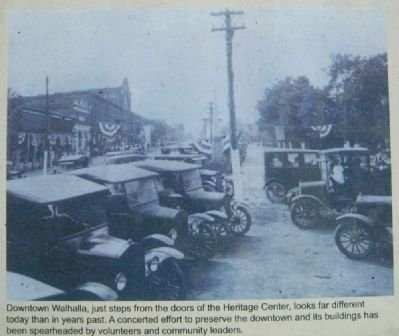
Photographed By Brian Scott, April 8, 2013
4. Oconee Heritage Center Marker
Downtown Walhalla, just steps from the doors of the Heritage Center, looks far different today than in years past. A concerted effort to preserve the downtown and its buildings has been spearheaded by volunteers and community leaders.
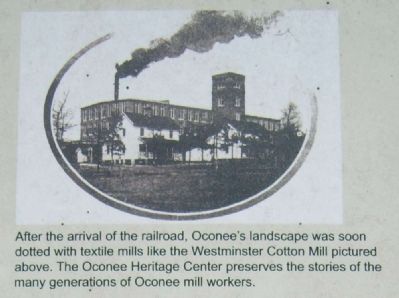
Photographed By Brian Scott, April 8, 2013
8. Oconee Heritage Center Marker
After the arrival of the railroad, Oconee's landscape was soon dotted with textile mills like the Westminster Cotton Mill pictured above. The Oconee Heritage Center preserves the stories of the many generations of Oconee mill workers.
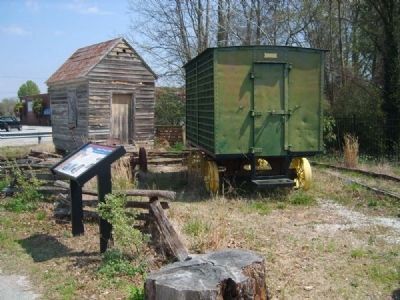
Photographed By Brian Scott, April 8, 2013
12. Oconee County Cage
The Oconee County Cage was one of several used in the early twentieth century as quarters for chain gang members at work sites. The cage is a small, metal cage on a wheeled chassis constructed ca. 1900. The cage was pulled by draft animals who were hitched to a metal tongue which projects from the front axle of the chassis. The cage is approximately fourteen feet long, eight feet wide, and seven feet high. The front end, the floor, and the roof are of solid sheet metal on a riveted frame. The sides of the cage are enclosed by metal bars and strips in an open grid. The rear of the cage has a hinged metal door allowing egress. The cage has twelve metal bunks inside, arranged in three tiers on each side. The bunks have metal frames carrying a mesh of metal strips, which supported the prisoners pallets. A small metal barrel in the center of the floor allowed for a fire. It is the most intact object of its type identified in the state. Listed in the National Register November 14, 1982.
Credits. This page was last revised on December 14, 2022. It was originally submitted on April 26, 2013, by Brian Scott of Anderson, South Carolina. This page has been viewed 560 times since then and 23 times this year. Photos: 1, 2, 3, 4, 5, 6, 7, 8, 9, 10, 11, 12. submitted on April 26, 2013, by Brian Scott of Anderson, South Carolina.
